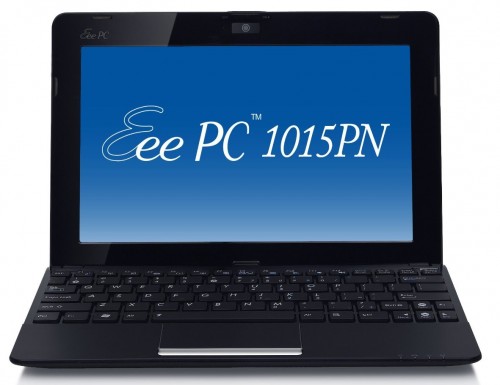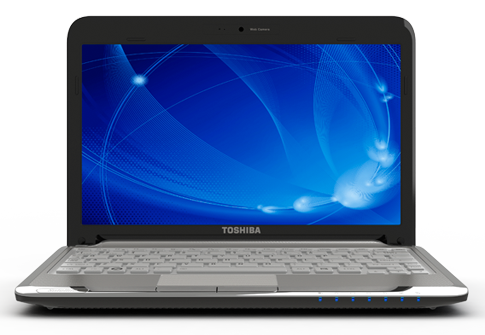Holiday Buyer's Guide: Notebooks
by Dustin Sklavos on November 15, 2010 9:00 PM EST- Posted in
- Laptops
- Guides
- Holiday 2010
Best Overall Netbook: ASUS Eee PC 1015PN-PU17 ($420)
While we don't have a whole lot of love here for Intel's Atom processor—it's dog slow and has seen virtually no evolution since its introduction—we do find there's a lot to like about its inclusion in the ASUS 1015PN.

The Eee PC 1015PN-PU17 is one of ASUS' myriad Atom-based offerings and part of their ever-growing Eee PC line, but it leverages every strength it conceivably can to produce what amounts to a sort of king of the netbooks: a dual-core Atom N550 processor coupled with NVIDIA's NG-ION graphics hardware. Naturally the netbook is Optimus-enabled, able to switch between the NG-ION and Atom's dire integrated graphics to improve battery life. The 1015PN also includes an increasingly rarefied matte screen, making it far more capable for the kind of outdoor use that netbooks should be ideal for.
If the Eee PC 1015PN has one Achilles' heel, it's battery life that comes up fairly short compared to the competition. The problem is that while it supports Optimus, you need to run the full Windows 7 Home Premium to get it... and ASUS ships the thing with Windows 7 Starter by default. Oops! So you lose dynamic GPU-switching (you can switch manually) but gain a much better netbook experience, at the cost of battery life. This is to be expected: there's a lot of extra power flowing through this system, but the payoff is in a machine that's more responsive and less aggravating to use than a basic single-core Atom netbook.
The rest of the 1015PN is bog standard for netbooks, with the usual 1GB of RAM and slow 5400-RPM hard drive. Bumping up to 2GB and Windows Home Premium will add another $100 or so to the total cost, and unfortunately ASUS continues to make it nigh impossible to actually upgrade the hard drive without tearing the system apart.
Netbook Runner Up: Toshiba T215D ($435)
If the idea of suffering through Atom in all of its glorious weaknesses doesn't sit right with you, Toshiba offers you another alternative: the AMD Nile-based T215D.

While Congo proved to be an exercise in "almost there," with Nile AMD finally proved they could bring the mayhem. The processors in this line are all derived from modern Athlon/Phenom II architecture, and they're consistently paired with the extremely capable Mobility Radeon HD 4225 integrated graphics.
What we're left with is a system that may not have the best battery life in the world (pushing just shy of five hours for typical use), but it's portable enough and gets along well enough in any other discipline. Even an NG-ION powered dual-core Atom is going to have trouble keeping up with a snappier Nile-based system, so if your usage pattern can't be squeezed into those narrow performance confines, the T215D is worth a look.
Technically some will complain that the T215D isn't a "netbook" since it uses an 11.6" chassis, but we're willing to stretch the definition. (Note that the higher spec Toshiba T235D we reviewed is larger still and sports a K325 dual-core processor in comparison to the K125 CPU in the T215D.) We wouldn't recommend any netbook as a powerful computing solution but rather as a "fast enough" alternative to Atom, and AMD's Nile offerings certainly fit that classification. The real question is whether you can live with the chromed-out silver aesthetics on the T215D.
When Portability Matters Most: ASUS 1015PED-MU17 ($326)
We've bashed on Atom performance plenty, but let's be clear: there's a niche that Atom fills perfectly well. That niche is the lightweight, inexpensive, long battery life netbook. Shop around and you can find cavalcade of similarly specced netbooks marching by, all tipping the scales at under 3lbs. and 8-10 hours of battery life, and priced to move starting at under $300. We'd recommend spending a bit more to get something with improved features and a larger battery life, though, which is why we return again to the ASUS Eee PC line. In fact, we ended up at the exact same 1015PN, this time without NG-ION. That means you keep the matte LCD but boost battery life up to 10 hours and save $100 in the process.
As an alternative to the ASUS 1015PN, you might also look at the Samsung N150-JP05 (JPxx). ASUS tends to get better battery life out of their netbooks in our testing, but the N150 also sports a matte LCD and has a different look that some will prefer over the ASUS clamshell design, and pricing starts at $300 instead of $325.










50 Comments
View All Comments
DBissett - Tuesday, November 16, 2010 - link
This model doesn't come up on Dell's website. How about a CURRENT model number?nirolf - Tuesday, November 16, 2010 - link
It's the XPS 15. I too had this problem, as even searching their website for "L501x" returned inconclusive results. Maybe a correction could be made in the article.plewis00 - Tuesday, November 16, 2010 - link
This is partly Dell's fault - you'll find their machines with names like 'new Studio 17' but the actual model number will be Studio 1745, etc.If you search for XPS 15 on the net, you inevitably end up with websites misnaming and listing the XPS M1530 15" notebook computer which was a 2008 model (albeit a very nice looking one! And, in my opinion, better looking than the new 2010 XPS 15).
Evil_Sheep - Tuesday, November 16, 2010 - link
-Interesting that only Dell and Asus got top PC recommendations. Actually I respect that: most websites have a manufactured diversity of brands in their recommended lists, probably to appease their advertisers. But also maybe it reflects that Anandtech seems to review a lot of Asus's and Dells. Where are the HP's, Lenovo's and Sony's?-I noticed you co-recommended the Asus U30Jc and U35Jc after you fairly slagged the U35 in your review and said the U30 was the preferred choice. Is this a subtle change of heart?
-The alternative recommendation in that category was the Toshiba Portege R700 but I don't think it makes sense to consider them as competitors since they aren't really in the same market. The R700 is in the "Macbook Air" category (funny how Apple has a way of creating its own market space): ultra-light and ultra-portable with power limitations, ideal as a 2nd computer for someone who wants more than a netbook, or as a primary computer for an undemanding user. The U30/35 on the other hand are clearly in the Macbook 13 space: a full-powered notebook that is still very portable. This is the so-called "thin and light" category, though I wish someone would come up with a name that is less awkward and ambiguous.
-There is a workstation recommendation...nothing wrong with that except it seems a bit unnecessary since there are only 3 self-described competitors in that space (HP, Dell, and Lenovo) and you can't go wrong with any of them. And the number of people looking for workstation recommendations are probably quite small (as you mentioned) since IT depts often procure them, and in addition few need those capabilities in the first place.
-No DTR/17" multimedia recommendation? Seems like an important category.
Not to be overly critical. I like the picks and it's a good overview generally.
Powerlurker - Tuesday, November 16, 2010 - link
HP is widely regarded as pretty much the bottom of the barrel reliabilitywise.Dug - Tuesday, November 16, 2010 - link
I think the MSi GX640 or 660 series should be at the top for gaming.It is fairly lightweight compared to others and has an ATi 5870 or 5850.
I personally like the 640 because of the 1680x1050 resolution and i5 processor.
JarredWalton - Tuesday, November 16, 2010 - link
Having tested the GX640, the keyboard is one of the worst I've personally encountered... almost to the point where I'd prefer the Acer keyboard. It just feels all around horrible when you consider the cost of the laptop, and it should be trivial to change it out, since just about anything would be an improvement. I can't comment personally on the GX660 or GX740 though, so perhaps they're better.Jeff7181 - Wednesday, November 17, 2010 - link
I love Lenovo ThinkPads... it's going to be a tough sell to get me to buy a different brand when I upgrade. I can't believe none even made it as a runner up or alternative. My R61 is great... has the power and memory run several virtual machines for my studies, can do media encoding and light gaming and barely gets warm to the touch while staying quiet. AND it gets 4-5 hours of battery life on the battery that came with it in Feb. of '08.MrMist - Wednesday, November 17, 2010 - link
I think the Asus 1018P with the N550 CPU is an interesting ultraportable, and it would be interesting to see it compared with the other alternatives here.erwos - Wednesday, November 17, 2010 - link
You do realize that the 1015PN does not have Optimus out of the box, right Jared?